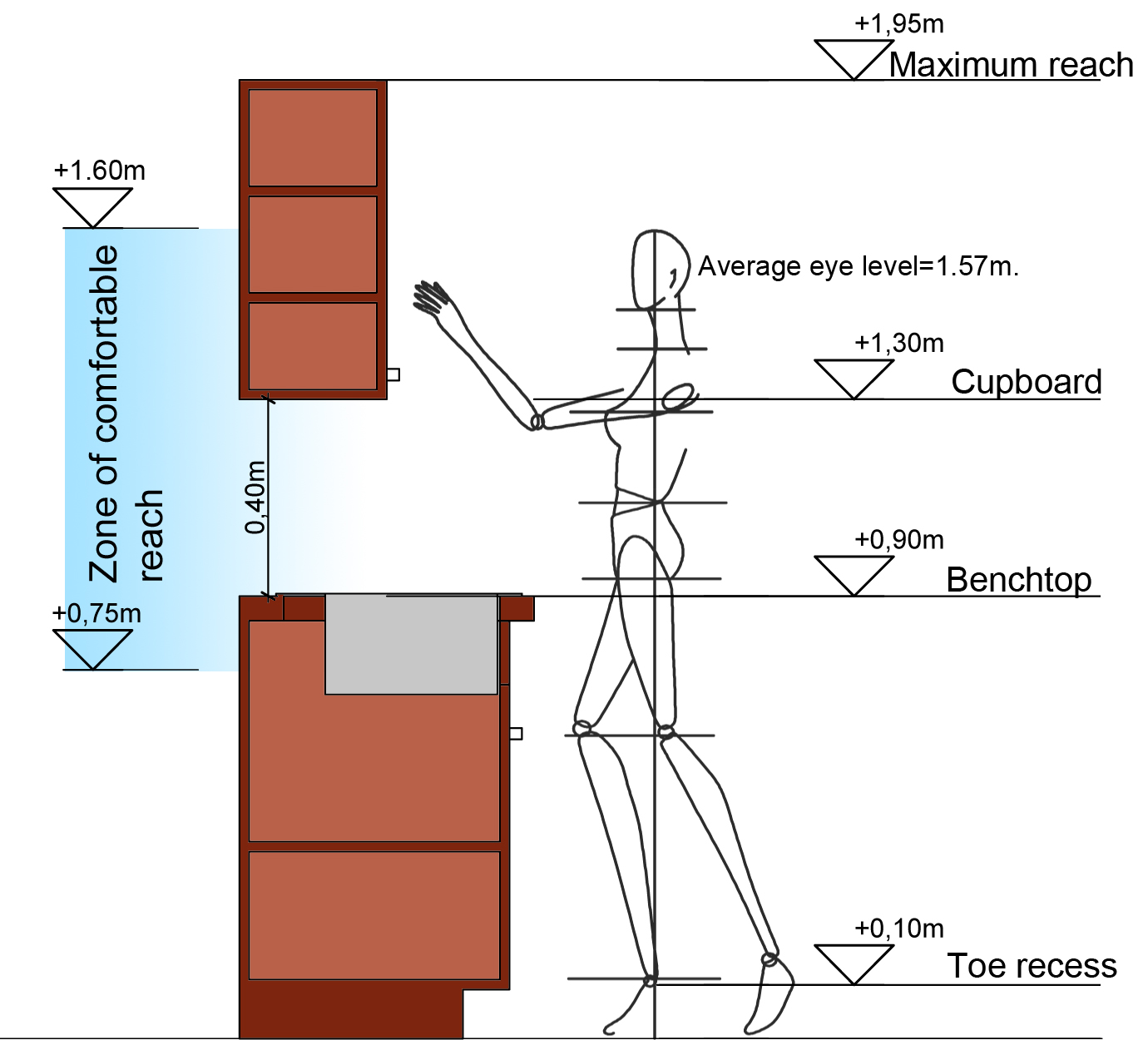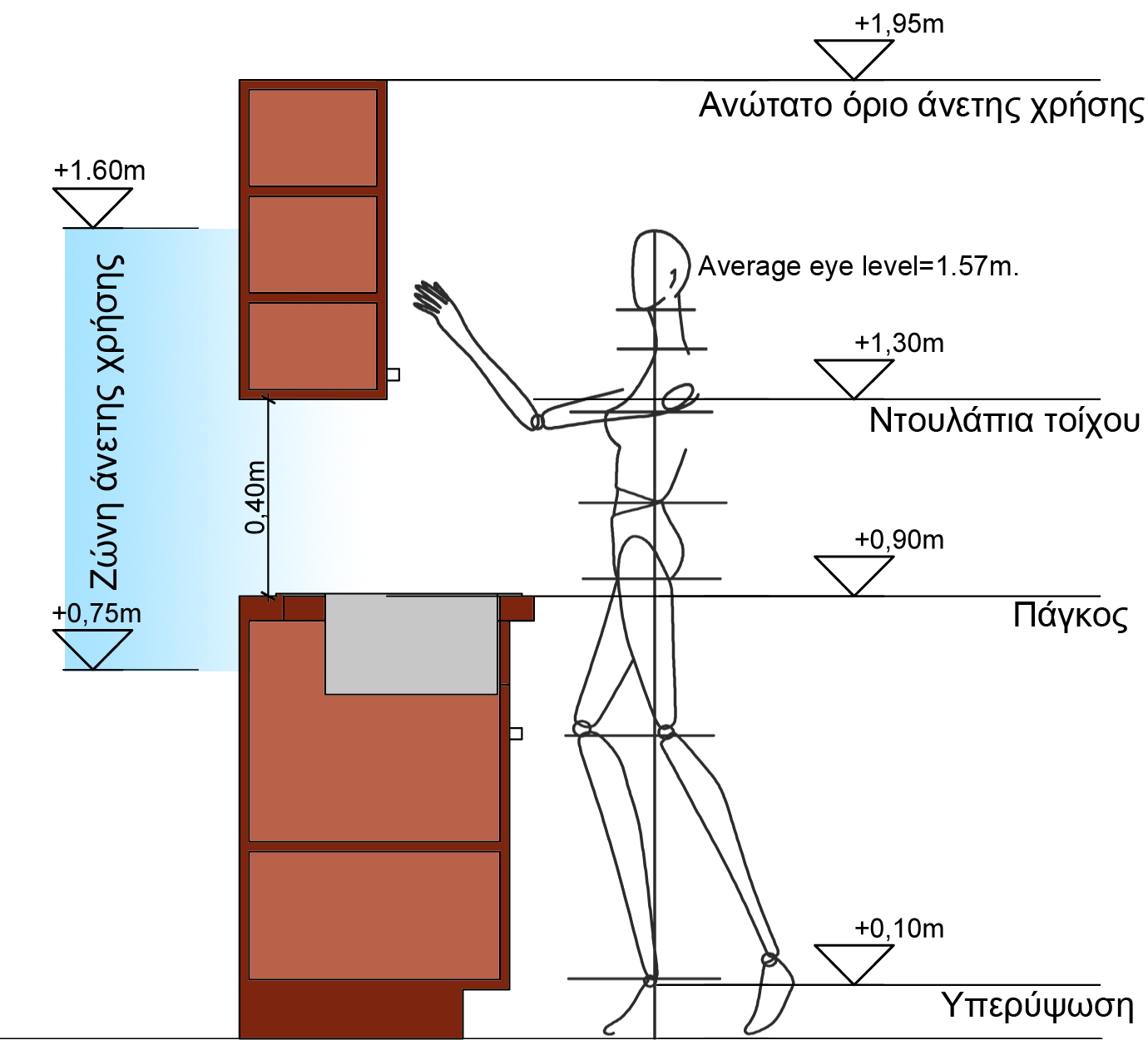Standard Upper Cabinet Height: Upper Cabinet Height Above Countertop

Upper cabinets play a crucial role in kitchen design, offering valuable storage space and enhancing the overall aesthetic appeal. Determining the optimal height for these cabinets is essential for maximizing functionality and ensuring user comfort. The standard height of upper cabinets above countertops is a widely adopted guideline, but variations exist based on individual preferences and kitchen layout.
Standard Range and Variations
The standard height for upper cabinets above countertops is typically between 18 inches and 30 inches. This range allows for sufficient clearance for most individuals while ensuring ample storage space. However, several factors can influence the actual height chosen, including:
- Ceiling Height: In kitchens with high ceilings, upper cabinets can be installed higher to maximize storage space. This is particularly common in modern kitchens with open-plan designs.
- Countertop Height: The height of the countertop directly impacts the upper cabinet height. For example, if the countertop is 36 inches high, the upper cabinets will be installed at a height of 54 inches to 66 inches, depending on the desired clearance.
- Personal Preferences: Individual reach and comfort levels can influence upper cabinet height. Some people prefer lower cabinets for easier access, while others prefer higher cabinets to create a sense of spaciousness.
Pros and Cons of Different Heights
The choice of upper cabinet height involves a trade-off between accessibility, aesthetics, and functionality. Here’s a table outlining the pros and cons of different heights:
| Height | Pros | Cons |
|---|---|---|
| 18 inches | Easy access, ideal for shorter individuals, creates a spacious feel | Limited storage space, may feel cramped for taller individuals |
| 24 inches | Good balance of accessibility and storage space, suitable for most heights | May require a step stool for reaching the top shelves |
| 30 inches | Maximizes storage space, ideal for taller individuals, creates a more dramatic effect | May be difficult to reach for shorter individuals, can make the kitchen feel crowded |
Illustrative Representation
[Illustration: A simple diagram showcasing a countertop with a height of 36 inches and two upper cabinets. The first cabinet is installed at a height of 54 inches, while the second cabinet is installed at a height of 66 inches. This visual representation helps illustrate the relationship between countertop height and upper cabinet height.]
Factors Influencing Upper Cabinet Height

The height of upper cabinets is a critical design element that significantly impacts both the functionality and aesthetics of a kitchen or bathroom. It’s not just about reaching the top shelf; it’s about creating a harmonious balance between practicality and visual appeal. Several factors influence the ideal upper cabinet height, each playing a crucial role in achieving the desired outcome.
Ceiling Height and Optimal Upper Cabinet Placement
Ceiling height is a fundamental factor determining the optimal placement of upper cabinets. Higher ceilings provide more flexibility, allowing for taller cabinets that maximize storage space without compromising headroom. Conversely, lower ceilings necessitate a more strategic approach to ensure sufficient clearance and avoid a cramped or claustrophobic feeling.
For instance, in a room with a standard 8-foot ceiling, upper cabinets can typically be installed at a height of 18 inches above the countertop, providing ample storage space while maintaining comfortable headroom. However, in a room with a 9-foot ceiling, the upper cabinets can be installed at a height of 24 inches above the countertop, creating even more storage space without compromising on comfort.
User Height and Reach Considerations
The height of the user is another critical factor influencing upper cabinet placement. It’s essential to consider the reach of the intended user to ensure comfortable and convenient access to the contents of the cabinets.
For example, in a kitchen designed for a family with tall members, upper cabinets may be installed at a slightly higher height, allowing for greater storage space while still maintaining comfortable access. However, in a kitchen designed for a family with shorter members, the upper cabinets may be installed at a lower height to ensure easy access for everyone.
Kitchen Versus Bathroom Design Considerations, Upper cabinet height above countertop
The specific needs of a kitchen versus a bathroom dictate the design choices for upper cabinets. In a kitchen, the primary focus is on functionality and storage capacity. Therefore, upper cabinets are typically installed at a height that maximizes storage space while maintaining comfortable access.
In a bathroom, however, the design considerations are slightly different. While storage is still essential, aesthetics and privacy are equally important. Therefore, upper cabinets in a bathroom are often installed at a lower height to create a sense of openness and minimize the feeling of being enclosed. Additionally, the upper cabinets may be designed with features that enhance privacy, such as frosted glass doors or mirrored surfaces.
Alternative Upper Cabinet Configurations

Beyond the standard upper cabinet setup, homeowners can explore a variety of configurations that cater to specific needs and design preferences. These alternative designs offer unique advantages and disadvantages, impacting functionality, aesthetics, and overall kitchen flow.
Open Shelving
Open shelving offers a contemporary and airy alternative to traditional upper cabinets, creating a sense of openness and showcasing beautiful dishes or decorative items.
- Advantages: Open shelving allows for easy access to frequently used items, creating a more streamlined kitchen experience. It also provides a visually appealing display for curated collections, adding character to the space.
- Disadvantages: Open shelving requires meticulous organization and regular cleaning to maintain a neat and clutter-free appearance. It also offers less storage space than traditional cabinets and may not be suitable for all kitchens, particularly those with limited countertop space or a high volume of kitchenware.
Glass-Front Cabinets
Glass-front cabinets offer a balance between storage and display, allowing homeowners to showcase their belongings while keeping them protected behind glass doors.
- Advantages: Glass-front cabinets create a sense of visual interest and add a touch of elegance to the kitchen. They also provide a convenient way to display decorative items, glassware, or china, while keeping them dust-free.
- Disadvantages: Glass-front cabinets may require more cleaning than traditional cabinets, as fingerprints and smudges are more visible. They can also be more expensive than solid-door cabinets.
Cabinet Doors with Different Finishes
Cabinet doors with different finishes offer a wide range of design possibilities, allowing homeowners to create a unique and personalized look.
- Advantages: Different finishes can complement the overall kitchen design, creating a cohesive and stylish look. They can also help to highlight specific areas or create visual interest in the space.
- Disadvantages: Choosing the right finishes can be overwhelming, and it’s important to consider the overall design scheme and the desired aesthetic. Certain finishes may require more maintenance than others.
Visual Representation of Upper Cabinet Configurations
Different upper cabinet configurations can significantly impact the overall look and feel of a kitchen.
- Staggered Heights: Staggered upper cabinets create visual interest and can be used to highlight specific areas of the kitchen. For example, taller cabinets can be used to house appliances, while shorter cabinets can be used to create a more intimate feel in a dining area.
- Angled Cabinets: Angled upper cabinets can add a unique and modern touch to the kitchen. They can be used to create a focal point or to maximize storage space in a corner.
- Wall-Mounted Shelves: Wall-mounted shelves offer a minimalist and functional solution for storage and display. They can be used to create a floating effect and can be customized to fit the specific needs of the kitchen.
Upper cabinet height above countertop – The ideal upper cabinet height above the countertop is a matter of personal preference and kitchen design. However, a standard height of 18 inches allows for ample storage space without feeling cramped. This height also pairs beautifully with the classic combination of grey countertops and white cabinets , creating a timeless and elegant aesthetic.
Ultimately, the best height is one that maximizes both functionality and visual appeal.
The ideal upper cabinet height above a countertop is often debated, with some favoring a lower height for easier access and others preferring a taller design for maximizing storage. A similar debate exists about the best placement of wall decor, as seen in David Dobrik’s bedroom wall , where artwork is strategically positioned to create a visually appealing and balanced space.
Ultimately, the best choice for upper cabinet height, like wall decor placement, depends on personal preference and the overall design aesthetic of the room.